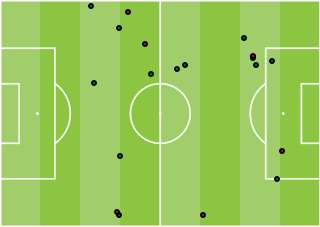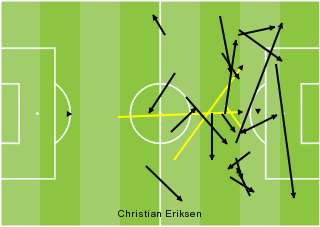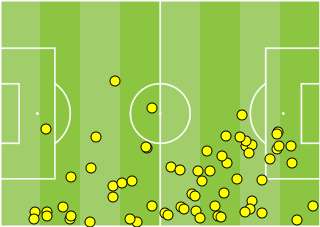Solskjaer’s new emphasis on speed bears fruit
Lost amid the more interesting story of another chaotic summer transfer window for Manchester United was Ole Gunnar Solskjaer’s focus on adding speed to the squad.
By signing Daniel James and Aaron Wan-Bissaka, working hard to improve his players’ fitness, and bringing Anthony Martial to the fore, Solskjaer has created a more energetic and direct United side reminiscent of the Sir Alex Ferguson team the Norwegian was a part of in the 1990s.
After a difficult first 45 minutes at Old Trafford, we began to see evidence of this tactical change once United dropped deep in the second half, drawing Chelsea onto them before launching quick counterattacks.
Martial, James, Paul Pogba, Jesse Lingard, and Marcus Rashford are all brave enough to run directly at a backpedalling defence, hence United ruthlessly scored three times on the break.
For a team full of individuals, and with a manager without the tactical nous of a Jurgen Klopp or Pep Guardiola, it is an approach that could come to define United this season.
The speed-based approach did not work so well in the first half, however. Sat much higher up the pitch, United's direct and vertical attacks created an uncontrolled end-to-end contest in which Chelsea were unlucky not to score at least twice.
In an ideal world, Solskjaer would like to press hard and play with a high back line, but the evidence on Sunday suggests territorial humility is the way forward.
Below: United's dribbles during the Chelsea match

Mount & Barkley show early promise for Chelsea
Chelsea do not need to panic; they were unlucky to lose by such a wide margin and, for half an hour at least, Lampard’s tactical master plan looked to be working.
He wants to play intricate possession football that builds from the back, with attacks focused on winning the ball high up the pitch and funnelling one-twos through the centre.
That is why Mason Mount and Ross Barkley started together on Sunday, the more senior player drifting in from the left to become a second number 10 around the (initially) struggling Scott McTominay.
Pedro was also regularly cutting inside, creating narrow attacking lines that threatened to overwhelm the hosts during an opening period of energetic pressing.
Without Eden Hazard to get them out of a tight spot, Chelsea will need considerably improved interaction between their attacking midfielders this season, so while a 4-0 defeat might sound like disaster there were plenty of features at Old Trafford that will have encouraged Lampard.
Eriksen introduction sparks Tottenham comeback
Tottenham boss Mauricio Pochettino admitted after his side's match against Aston Villa that his initial formation – a diamond 4-4-2 – had been a mistake.
Presumably his intention was to solidify central midfield, the area in which Aston Villa are most dangerous, but John McGinn and Jack Grealish managed to find space around Harry Winks regardless. Following the initial error, Pochettino deserves credit for flipping the match on its head.
In the 64th minute Christian Eriksen was brought onto the pitch and Spurs switched to a 4-2-3-1, with the Denmark international playing as the number 10.
In a more advanced position than usual, Eriksen pulled all the strings, quickly forcing Villa to retreat deeper and deeper until their penalty area was being peppered with corners and free-kicks. There were elements of fortune to both Tanguy Ndombele’s equaliser and Harry Kane’s first goal, but the deflections and bobbles that went in Spurs’ favour reflected a growing desperation in the Villa defence.
Villa can take a lot of positives from their own performance; naivety in the opening match is to be expected, and perhaps in future Dean Smith will work on ensuring his defenders do not concede so much territory when protecting a lead late on.
For 75 minutes Villa’s dual number eights - McGinn and Grealish - shone, while Trezeguet, Bjorn Engels, Tyrone Mings and Neil Taylor all gave assured performances.
Below: Eriksen's passes against Villa (black are successful, yellow are unsuccessful)

Poor positioning from West Ham hands City victory
Off the ball, Manuel Pellegrini’s 4-2-3-1 formation against Manchester City looked relatively secure at the London Stadium – apart from one chink in the armour that proved to be West Ham's downfall.
Despite fielding Michail Antonio specifically for his defensive abilities (starting on the left he could, in theory, help prevent Kevin De Bruyne from running the game from the centre-right channel) it was the left winger who failed to track back time and again.
That meant Aaron Cresswell had to deal with both Kyle Walker and Riyad Mahrez, with the latter going close to scoring several times shortly before Gabriel Jesus’s opener.
In fact, just minutes before Antonio allowed Mahrez to run free and set up the goal, Cresswell threw his hands in the air and berated his team-mate. It did not have the desired effect.
On the ball, West Ham’s tactical problems derived from Jack Wilshere’s lack of agility or dynamism in central midfield, plus Manuel Lanzini’s unnecessarily high position alongside Sebastien Haller.
Had West Ham played long balls up to Haller then Lanzini’s position – where he could latch onto knock-downs – would have made sense, but Pellegrini’s side had no intention of doing so.
The Argentine should have come deep to help build attacks, taking advantage of a slow and disjointed opening half from Man City, but instead he was a passenger for long stretches.
Below: All of Mahrez's touches against West Ham

Bruce’s template revealed in lacklustre Newcastle display
Arsenal did not play well on Sunday afternoon. Aside from a few notable exceptions, namely Reiss Nelson and Pierre-Emerick Aubameyang, they lacked purpose and continually threw possession away with sloppy passes.
Fortunately Newcastle were just as wasteful, and although it was an insipid game it did at least confirm how Steve Bruce will manage the Magpies.
First, a 3-5-1-1 formation will feature heavily, as it did most notably when he was in charge of Hull City in the Premier League.
Keen not to drop into a flat back five, Bruce generally instructs one wing-back to push high to meet the opponent (when the ball is on their side of the pitch), creating two banks of four, with a hunched 5-4-1 only appearing during sustained periods of possession dominance.
Consequently his wing-backs are perhaps the most complex, and crucial, part of the system. Matt Ritchie needs to have a brilliant season.
Elsewhere, Jonjoe Shelvey launches longer balls forward, dictating from the base of midfield, while Isaac Hayden and Sean Longstaff run energetically as box-to-box midfielders.
That essentially leaves Miguel Almiron alone to connect creatively with Joelinton, hence Newcastle’s measly two shots on target across the 90 minutes. Newcastle won’t be fun to watch this season.
